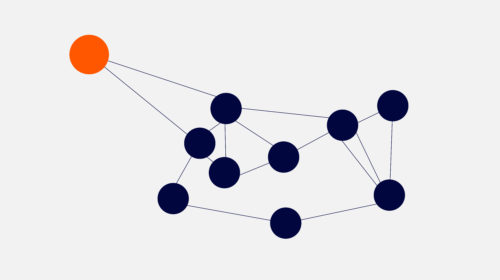
Two years ago, before my time at zero360, I got the chance to support a decentralized team as an interim CMO. Decentralized in this case meant that the team worked in 3 time zones and continents. During this time I learned how to deal with the challenges that remote work brings with it. Nowadays, when home office becomes a permanent workspace, I would like to share my insights. Here are 7 tips that have proven themselves for my team.
1. Dealing proactively with frustration
We can consciously control technology.
Even though we have many ways to communicate digitally with each other and structure our projects today, the tools do not always work reliably. The more difficult it becomes and the more often a video conference is interrupted, the greater the frustration for all involved. It is important that this frustration does not affect our mood. Consciously understanding why something does not work technically and developing solutions with foresight is one way to consciously avoid frustration or to shift it to an area other than daily business. But proactive also means that everyone who uses digital tools plans with foresight and checks in case of doubt whether something (does not) work. An example is early dial-in to conference meetings to check screen sharing and other functions. This helps to prevent frustration spreading to the entire team. As a team lead, mood checks at the beginning and end of the day help to get a feeling for the frustrations or conflicts that arise in the team. In most cases these can be resolved quickly.
2. Communicate empathically and contextually
Digital communication is not the same as personal communication in the same room.
When we communicate digitally, we cannot use all our senses and possibilities to understand our counterpart. Empathy, which helps us to understand other people and their messages, is made difficult in digital forms of communication. One example of this is text chat. This channel offers a lot of room for interpretation of statements, as communication is often short and spontaneous. In some cases this can lead to misunderstandings. Therefore I recommend to communicate empathically and contextually on all digital channels. In leadership roles this means to have reflected the following questions in advance: 1) What is it all about? 2) Why do I need support? 3) How and when can (realistically) support be expected? If we consider beforehand what information the other person needs in order to understand me, we save ourselves the need to explain and classify our own statements afterwards.
3. Enable mindfulness
The home office is both oasis and dreariness.
Even if I am in my usual environment, I often do not have enough time to relax in my remote working environment. A study by Stanford University has shown that people are about 13% more productive in the home office. This is due to increased focus and fewer breaks. I could also see this overload in my team and wanted to rule on it. For me, two leadership measures have become crucial: 1) Mindfulness must be learned and recognized as an important value. As a leader, I set a good example and openly share how I consciously organize my day and proactively establish rest breaks. 2) Open recognition and transparent expectations help everyone to understand what the daily tasks and goals are. The Definition-of-done Framework from the SCRUM toolbox helps to create clarity here.
4. Making expectations explicit
I hear you, you hear me?
When we talk about expectations, these are expectations that we have of ourselves, that the team has of the leadership and that the team has of each individual. Special expectations are generally placed on communication. Unfortunately, these expectations are often implicit and are rarely expressed openly. One example is the use of communication channels and the expectation of when feedback should be given. York Scheunemann of Google and Beat Bühlmann of Evernote suggest that remote teams should develop a communication charter that defines what we as a team expect from ourselves. These expectations can be seen in little things like how quickly we want to respond to emails, how we organize meetings, or whether we do video conferencing with the camera on. Other points could be how we maintain our calendars or messaging platforms so that everyone knows exactly when colleagues are available.
5. Define work mode for collaboration
Remote teams teams also thrive on collaboration.
Especially for us as innovation consultants, co-creation is one of the most important ways of working to quickly come up with valuable ideas. It often happens that we spontaneously find ourselves in front of a whiteboard and start to develop ideas. What seems natural in co-creation, needs a different framework in the digital space. We need to be clear and aware of how we come together and what we need to develop good results in the respective working mode. Examples of working modes are brainstorming, synthesis, prioritization or documentation. It is also important to define which virtual working mode needs direct communication. I have often maintained voice communication digitally for work blocks that are partly worked on independently in parallel, in order to allow for short interposed questions and a feeling of working together. This has often helped the team to work less frequently in feedback loops.

6. Establish Meeting Purpose and Social Bonding
Meetings in digital space are extremely important for remote teams.
They are used for coordination, but also to come together as a team and feel part of a larger group rather than an isolated lone fighter. I have observed that it is easier to consciously name the “Meeting Purpose” and to give a conscious framework for professional and content-related coordination. In general, it is important to organize meetings in remote teams according to needs in order to maintain a certain natural dynamic and to give everyone the freedom to organize their daily routine individually. Social bonding can be a shared beer or lunch for remote teams – there should be no limits to creativity here. The important thing is that it is not forced, but develops naturally from the needs of each individual.
7. Assign clear responsibilities for project structures
Where are we, where are we going?
The last important point I see is the building and maintenance of one truth for all. Through transparent project management, everyone knows where things stand at the moment and by when certain issues must be resolved. Ideally, remote teams work iteratively in sprints and use digital tools to keep an eye on their backlog and project pipeline. For me in a leadership role, it was always a matter of course that the responsibility for maintaining the tools was also mine.
And most importantly, I believe in building and maintaining one truth for all. Through transparent project management, everyone knows where things stand and by when certain issues must be resolved. Ideally, remote teams work iteratively in sprints and use digital tools to keep an eye on their backlog and project pipeline. For me in a leadership role, it was always a matter of course that the responsibility for maintaining the tools was also mine.

Author
Marian Kaufmann


